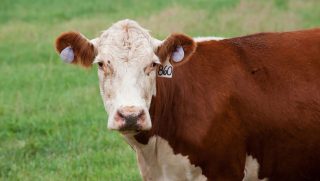The American Farmland Trust’s Women for the Land initiative brings to the forefront the gender-related challenges within agriculture and offers practical solutions. By engaging with thousands of women farmers and advocating for change, the organization highlights the underrepresentation of women in leadership roles and addresses economic disparities they face. Recommendations such as promoting women for leadership roles, improving land and capital access, and strengthening peer-to-peer education models provide actionable steps toward a more inclusive and equitable agricultural sector.
For over 40 years, American Farmland Trust has been working to support farmers and ranchers in accessing land, planning for the future of their farms, and integrating new and innovative farming practices that support a resilient future. But we cannot talk about farming without acknowledging the valuable contributions that women have made to the work. AFT’s Women for the Land initiative works to provide women farmers with access to the resources, technical advice, and policy facilitators they need to be leaders in conservation and resilient agrifood systems. The effort has connected with thousands of women farmers, ranchers, landowners, and aspiring farmers to highlight social and economic challenges faced by women in farming.
Historically, farming has been a male-dominated industry. Yet over the next 20 years almost a third of farmland will change hands in ownership due to an aging producer population. These changes in ownership represent challenges as well as opportunities for supporting greater equity in ag.
Earlier this year, the Women for the Land team published an in-depth report on the State of Gender Equity in U.S. Agriculture. The report emphasizes the challenges that women farmers face, such as underrepresentation, economic disparities, and data limitations, and provides opportunities where change can impact the future.
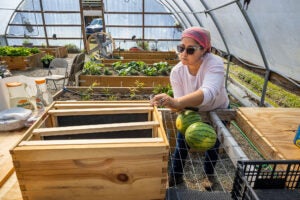
The report defines the word ‘women’ as a gender-inclusive way to include cis-gendered women, transfeminine women, and femme-presenting non-binary people who are marginalized by misogyny or impacted by women-related issues. It also notes that the USDA Census of Agriculture primarily captures cis-gendered women and provides limited insight into the presence of queer and gender non-conforming people in agriculture. That makes it difficult to get an accurate account of how many trans or non-binary individuals are being excluded from such surveys.
“Women tend to run farms that are about half the size and make 151% less farm income than those run by men.” That is to say, for every $1 a woman makes, a man would make about $2.50.
With all of this in mind, we’ve highlighted a few key takeaways from the report that show how critical it is to center agricultural research on the experiences of women, trans, and gender non-confirming farmers.
1. Women needed in more leadership roles
Women of all races are underrepresented as decision-makers on U.S. farms. One of the most underrepresented demographics is Black women farmers, accounting for only 12,518 of the 1,224,726 woman producers in 2022. “The 2017 Census of Agriculture found that more than half, 56%, of all farms had at least one female producer involved in the operation, but that just 29 percent of all principal operators (people primarily responsible for the day-to-day operation of the farm) were women.”
This highlights the lack of women in leadership positions despite being present on more than half of the farms in America. However, data from the Census of Agriculture does seem to indicate that women hold a growing presence in agriculture. It said, “Surveys conducted by the National Young Farmer Coalition show that women represent an outsized share of the beginning farmer population, with more than 60%.”
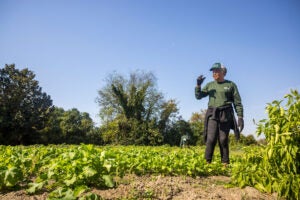
Encouraging women to take on leadership roles in agriculture is important for making fair decisions with broad benefits. Right now, there aren’t enough women in these important positions, but there are things that can be done to change that.
For those involved in local farming groups or advisory boards, consider spreading the word about opportunities for women and others who may not have had a chance before. Additionally, providing things like childcare support or compensating for time spent in meetings will make it easier for women operators to attend.
By recommending and supporting women for leadership roles, a more diverse range of perspectives can be represented in farming decisions — leading to a more inclusive agricultural community where everyone has the opportunity to lead and contribute.
2. Prioritize women’s access to land and capital
It’s crucial to prioritize initiatives that facilitate women’s access to land and capital within the agricultural sector. This access can significantly impact their ability to expand their operations and achieve success. Research indicates that women often manage smaller farms and engage in non-traditional agricultural ventures, such as specialty crops and niche markets, which may not align with the focus of government incentives and insurance programs tailored to larger commodity production.
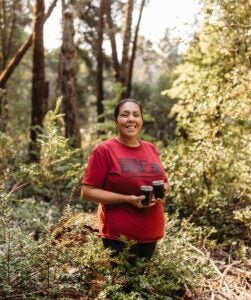
By addressing the barriers to accessing land and capital, women farmers can scale their operations effectively. Many federal agricultural programs are not designed to support the diverse needs of women farmers, resulting in limited financial and technical assistance for their farms. Therefore, there is an urgent need to develop targeted initiatives that cater to the unique challenges faced by women in agriculture.
3. Conduct more research on the experiences of women
Women have been shown to be more diverse and represent greater racial and ethnic diversity, while leaning toward organic production more often. Additionally, women tend to be drivers of local economies and powerful leaders of local businesses.
Developing case studies that spotlight the experiences of women in organic agriculture should be considered. These studies could offer valuable insights into successful farming practices while promoting gender diversity within the industry. Women farmers often prioritize sustainable methods and play a significant role in urban agriculture.
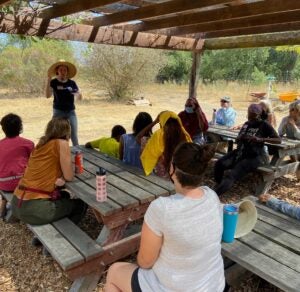
By examining the stories of women farmers, we can gain practical knowledge for enhancing farm profitability and sustainability. These case studies can highlight successful business models and strategies for overcoming obstacles in the agricultural landscape. Additionally, they can illustrate the economic contributions of women farmers as drivers of local economies and proficient small business owners.
Sharing these narratives can foster a deeper understanding of the vital role women play in agriculture and inspire further investment in their farms.
4. Explore passing a Women in Agriculture Resolution
Addressing the multifaceted challenges faced by women in agriculture requires proactive measures at both the state and federal levels. Gender-based violence in the workplace, along with heightened risks of chemical exposure for female farmworkers, underscores the urgent need for targeted interventions to safeguard the health and safety of women in agricultural settings.
Moreover, differences in farm size between female and male owner-operators exacerbate the inequities in accessing government programs and incentives. This disparity, coupled with the exclusion of women from key agricultural networks and mentorship opportunities, impedes their professional advancement and limits their ability to tap into crucial resources and support systems.

Several states, including California and New York, have taken important steps by passing Women in Agriculture Resolutions. These resolutions serve as vital platforms for raising awareness among lawmakers about the unique struggles faced by women in agriculture.
These resolutions lay the groundwork for fostering a more inclusive and equitable agricultural sector where women have equal opportunities to thrive and contribute to sustainable food systems and beyond.
5. Strengthen and expand peer-to-peer farmer education models
Strengthening and expanding peer-to-peer farmer education models, especially among women in agriculture, is essential for female farmers’ success. Many traditional educational spaces in agriculture are male-dominated, and this can inhibit the benefits of these opportunities for women and marginalized groups. It is critical to create culturally appropriate peer groups that can help alleviate these challenges and provide a more supportive and effective learning environment.
Programs such as ATF’s Women for the Land, Women Food and Agriculture Network, Wisconsin Women in Conservation, Soil Sisters, and Black Family Land Trust Inc., among others, have led the charge on educating female farmers about accessing government capital.
Additionally, government-supported programs that encourage partnerships between agencies and female farmers can help improve educational opportunities for women in agriculture.

It’s crucial to recognize the valuable contributions women bring to farming and ensure they have equal opportunities for success. Through collaborative efforts and targeted initiatives, there is an opportunity to create a more diverse and thriving agricultural community where everyone, regardless of gender, can thrive.


